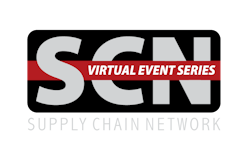
There are a variety of reasons as to why companies are undertaking a Lean initiative. Some do it because it will look good in their annual report. Others want to reduce costs or need to improve quality, service and lead time issues. Few, however, have the vision that Lean can drive profitable growth or understand the culture change needed to be successful. Most of these companies initiate a Lean transformation solely with the shareholder in mind, giving little consideration to other stakeholders.
One of the most important aspects to achieving lasting results is to think of Lean as a trilogy and consider the equilibrium among its stakeholders—the employee, the customer and the shareholder. There are other stakeholders, such as suppliers and society-at-large, but if you don’t meet the requirements of these primary ones, the Lean transformation will fail. One group cannot benefit at the expense of another because Lean should not be a zero-sum game. For example, if you are using Lean to reduce headcount, shareholders profit because costs are cut.
Employees
There are many seasoned Lean practitioners who do not fully comprehend that a Lean transformation is all about people. Instead, they view Lean as a set of tools and methodologies and don’t consider the impact on people of the rate of change inherent in the continuous improvement process. To gain employee buy-in and motivation, it’s crucial to understand their “what’s in it for me?” factor. Employees’ attitudes toward their superiors, company, customers and work need to be a positive force aligned with the organization’s goals.
As employees go through the learning process, leaders must give air cover for inevitable mistakes and focus on the process rather than the individual. Leaders should maintain the understanding that people are generally oriented towards wanting to do a good job and provide encouragement, recognition, and reward to those employees with the will to make positive change. Studies prove that the more employees are involved in kaizen events, the more satisfied they are with their jobs. Demotivated and/or ineffective employees should be given proper training and coaching to change, or they need to leave the organization. You don’t want naysayers to derail your Lean initiative.
The joke in the marketplace is that LEAN means Less Employees Are Needed. It is a mistake to tie headcount reductions to the Lean process. After all, how can you ask for employees’ ideas and then lay them off when they “kaizen” themselves out of a job? How much success could you have with future kaizen efforts? When a kaizen team finds a genuine need to reduce the headcount required for a particular work area, what should happen to the employees? Having a game plan in advance for reassigning and retraining workers is crucial.
Customers
Even though we’re acclimated to the concept of “voice of the customer,” companies often believe they know how to satisfy the customer without ever asking what is important to them.
You can’t keep customers happy at the expense of employees and shareholders. Customers would love for you to cut prices in half. However, shareholders and employees would be impacted by lost profits and closed plants. In balancing the customer equation, it’s also essential to understand the value they bring to your business. There are good groups of customers and bad ones. Customers who have unrealistic expectations or fail to operate ethically could cost you money. If employee and/or shareholder requirements aren’t met, you may need to decide not to do business with certain customers.
Shareholders
Many companies want to take costs out of their business to improve profitability and satisfy their shareholders. Rarely do these companies mention their customers or employees. The CEO and leadership team must also be committed to satisfying customers and employees in their transformation plans.
Actions to satisfy your employees and customers are usually the drivers that will deliver satisfactory results to shareholders. Keep in mind that as we drive to optimize all three stakeholder groups, tradeoffs at times will be necessary. For example, with the 2018 tax revision, many companies handed out employee bonuses, which seems in direct conflict with shareholder interests. Short-term thinking would look at this bonus as a mere cost that impacts profits and stock growth. However, strategic shareholders can favor the long-term value of fostering goodwill among employees and a climate geared toward employee retention, which ultimately costs less than employee turnover.
Maximizing the needs of all three stakeholder groups
Remember that you will only see temporary gains when you make decisions that benefit only one stakeholder group. Of course, any one decision isn’t going to satisfy all three constituencies. To assure the long-term success of your Lean transformation, you’ll want to strike the right balance by considering the benefits for each over an arc of time. Write your strategic plans to account for the Lean Trilogy, and put a formal feedback process in place to monitor your company’s success in terms of employees, customers and shareholders.














![Pros To Know 2026 [color]](https://img.sdcexec.com/mindful/acbm/workspaces/default/uploads/2025/08/prostoknow-2026-color.mduFvhpgMk.png?ar=16%3A9&auto=format%2Ccompress&bg=fff&fill-color=fff&fit=fill&h=135&q=70&w=240)




